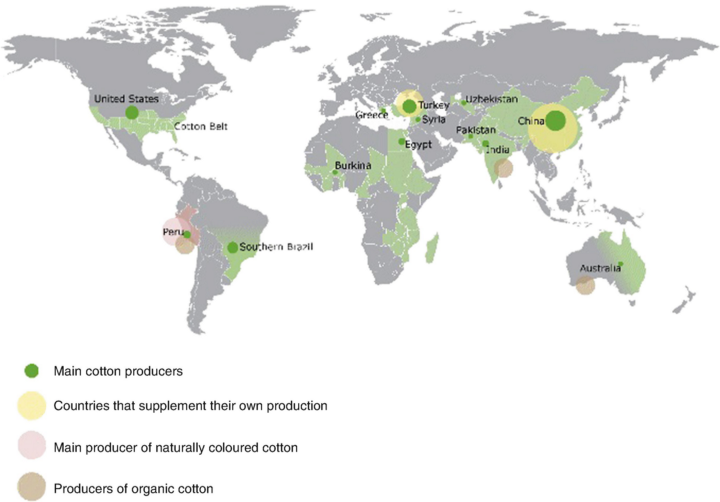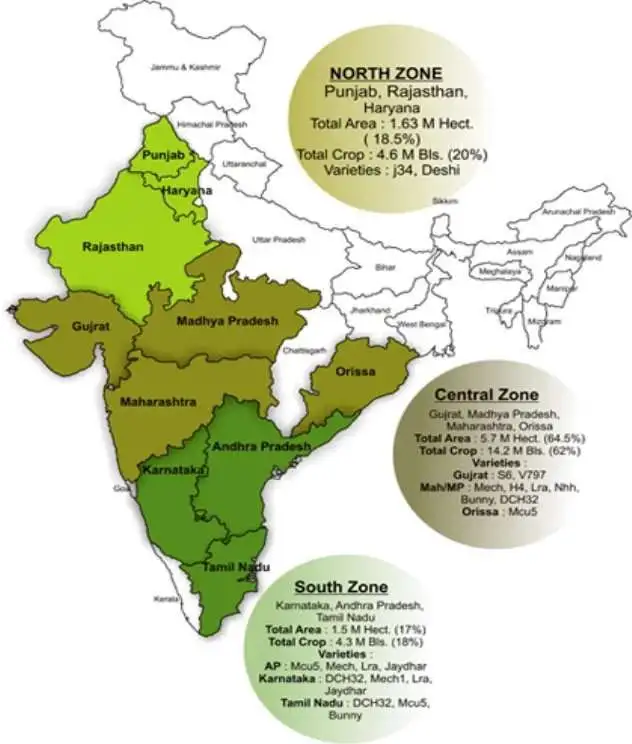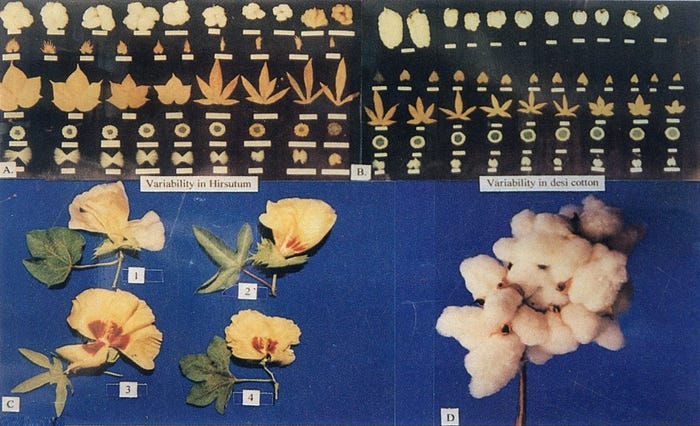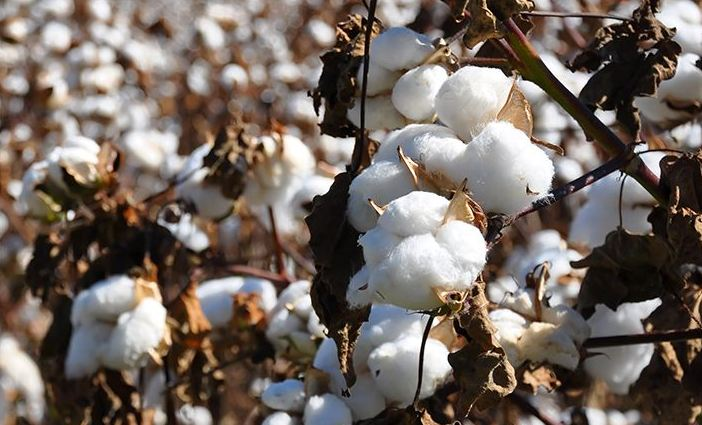Used predominantly in the textile industry, cotton is a crop that yields much global significance. It is cultivated mostly in tropical and sub-tropical regions in over 80 countries- including India, China, Pakistan, USA, Turkey, Brazil, Uzbekistan, Greece, and Egypt, which together contribute about 85% of the global cotton production. India stands first in the total area cultivated, and the third in the total volume produced.

Within the country, there are nine major cotton-growing states: Punjab, Haryana, Rajasthan & Uttar Pradesh, Madhya Pradesh, Maharashtra, Gujarat, Andhra Pradesh, Karnataka, and Tamil Nadu. These states cover about 95% of the total cotton cultivated area, and the same amount of cotton produced in India. Based on the geographical factors like soil type, topography, irrigation facilities, and productivity level, all of which affect cotton production in India, these states are divided into three zones, called the North Zone, Central Zone, and the South Zone. These factors also have an effect on the type of cotton that gets cultivated, and how it gets processed.

Types of Cotton
There are roughly four types of cotton species — Gossypium arboreum and G. herbaceum (Asian Cotton), G. hirsutum (American Upland Cotton), and G. barbadense (Egyptian Cotton) — that are cultivated in India on a commercial scale. These varieties are distinguished on the basis of the leaves, bracteoles, petals, balls, bolls, and seeds of the plant.
In order to improve the quality of the different cotton varieties produced in India, agricultural departments were set up in every major cotton producing state in India. These departments are managed by the All India Coordinated Cotton Improvement Project (AICCIP). Since its inception, AICCIP has discovered and released 90 varieties of upland cotton, 3 of Egyptian cotton, 39 diploid cotton, and 43 hybrids.

State Wise Cotton Production
In Punjab, cotton varietal work is carried out in Ludhiana and Faridkot, because of which 18 varieties of upland cotton and 6 of arboreum cotton have been released, while in Haryana, this work is undertaken in Hisar, from where 8 varieties of cotton are presently used for cultivation. In Rajasthan, the centers of cotton breeding work are Sriganganagar and Banswara, from where a total of 8 sub-varieties have been discovered. In MP, the improvement work is carried out in Akola, Nanded Rahuri and Jalgaon, from where about 34 sub varieties have been found. In Gujarat, Surat is the main research center where this work is carried out, while in Andhra Pradesh, it is undertaken in Guntur and Nandyal. Lastly, in Karnataka, the major improvement districts include Dharwad, Arbhavi, and Siruguppa, from where 17 varieties have been discovered, while in Tamil Nadu, the major hubs include Coimbatore, Kovilpatti, and Sribilliputhur, from where 35 sub-varieties of cotton have been discovered.
Because of these experiments being undertaken at these city centers, India has made major progress in terms of cotton breeding after Independence. Not only has there been a noticeable improvement in the yield and quality, but new cotton varieties have also become adaptable, and more resistant to insects and diseases. This has helped project India as a major competitor in the global textile market, and to further its GDP exponentially.
